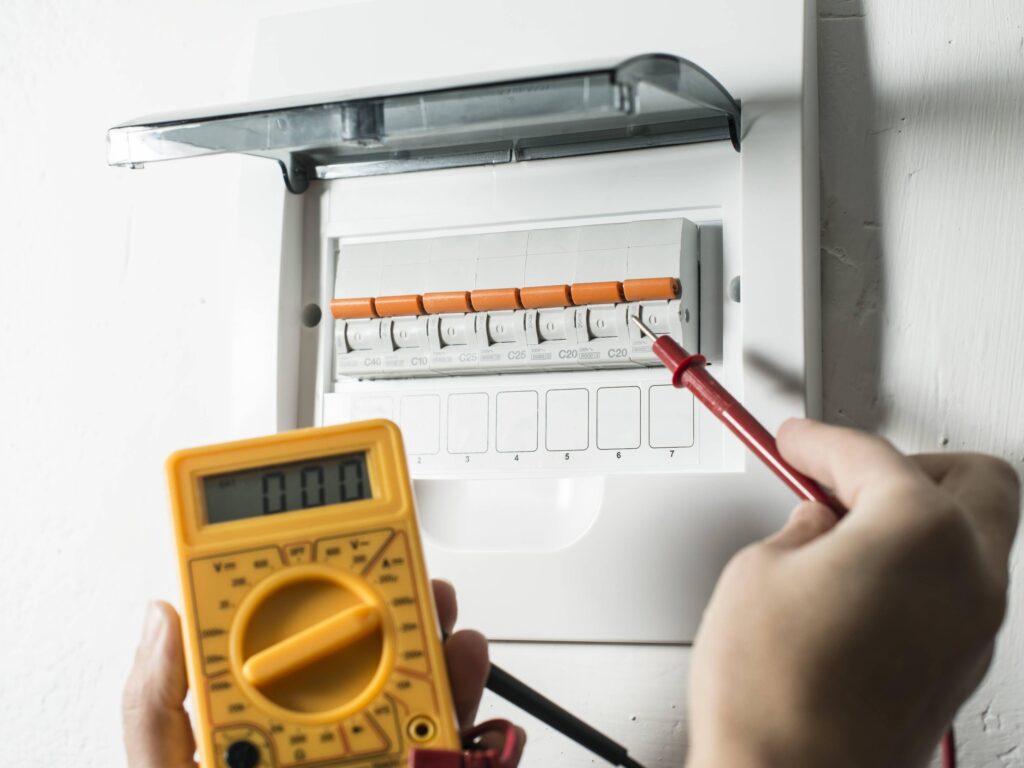Among the raft of regulations landlords need to comply with are electrical safety standards.
In this guide, we’ll explain everything you need to know about the rules on electrical safety in rental properties…
What does EICR stand for?
EICR stands for Electrical Installation Condition Report and refers to the inspection carried out on electrical installations in rental properties.
EICRs were previously only required for Houses in Multiple Occupation (HMOs), but since April 2021, landlords of all privately rented properties must have a valid certificate.
What is an EICR certificate?
A valid Electrical Installation Condition Report (EICR) will be issued to you if your rental property passes an inspection of its electrical installations.
The aim of the report is to highlight, prevent or fix:
- Any possible fire hazards caused by electrics
- Risk of electric shock
- Lack of earthing
- Overloaded circuits or equipment
Do I need an EICR certificate as a landlord?
A valid Electrical Installation Condition Report (EICR) is a legal requirement if you wish to rent out a property in England.
The EICR requirements explained
Who needs an EICR?
A valid EICR is required if you:
- Rent out a property under an Assured Shorthold Tenancy (AST)
- Rent out a House in Multiple Occupation (HMO)
Who can carry out an EICR?
EICRs must be carried out by a qualified and ‘competent’ electrician.
To find a qualified electrician to carry out your report, start with the government website.
How does an EICR inspection work?
An EICR assesses the safety and condition of your rental property’s electrical installations.
The inspection will look at:
- Consumer units
- Protective bonding
- Lighting
- Switches
- Sockets
- Permanently connected equipment, such as electric showers
During the inspection, the electrician will rate the condition of each installation as either ‘Satisfactory’ or ‘Unsatisfactory’ followed by a code:
- C1 – danger present, risk of injury, immediate remedial action needed
- C2 – potentially dangerous, urgent remedial action needed
- F1 – further investigation required
- C3 – improvement recommended
Although a C3 code may appear ‘unsatisfactory’, it counts as a ‘pass’ and does not mean the installation is unsafe.
As such, a valid EICR will be issued for inspections where only C3 codes are mentioned.
Are other electrical devices inspected?
EICR regulations don’t include appliances that aren’t fixed electrical installations.
So, cookers, hobs, fridges, and televisions aren’t covered in the EICR.
While not a legal requirement, landlords should regularly carry out Portable Appliance Testing (PAT) on electrical devices or appliances they supply to tenants.
Any electrical appliances brought into the property and used by the tenant are the tenant’s responsibility.
What do I need to do with an EICR?
Following an inspection, you must:
- Supply a copy of the EICR to all existing tenants within 28 days of the test being carried out
- Supply a copy of your valid EICR to all new tenants before their tenancy commences
- Supply a copy of your EICR to the local housing authority within seven days of them requesting it
- Keep your copy of the EICR and supply it to the person carrying out the next inspection
How much does an EICR cost?
The cost of an EICR varies depending on the size of your property and the number of electrical installations that require inspection.
For a small, one-bedroom property and EICR could cost in the region of £125, while a large four or five-bedroom property could cost around £300.
How long does an EICR last?
A valid EICR lasts for five years, after which time a new inspection must be carried out by a qualified, competent electrician.
What happens if my property fails an EICR?
If your rental property’s electrical installations are graded with any unsatisfactory code (C1, C2 or F1), the inspector will outline the work required to bring the installation up to a safe standard.
This work must be carried out within 28 days of the initial inspection, or sooner if specified on the report.
You must then get written confirmation from the electrician carrying out the remedial work that it’s been done, the standards have been met, and no further remedial work is needed.
You must also provide a copy of the confirmation to existing tenants and the local authority within 28 days.
What are the punishments for not having an EICR?
Punishments for failing to comply with EICR rules are severe.
Local authorities can issue fines of up to £30,000 if you’re found to be in breach of the regulations and can also issue remedial notices stipulating that work must be carried out within 28 days.
If this notice is ignored, the local authority can arrange for the work to be carried out and recover their costs from the landlord.
Do new-build properties need an EICR to be rented out?
New-build homes should have an Electrical Installation Certificate (EIC).
An EIC can be provided to tenants and the local authority if requested and no further checks then need to be carried out for five years from the date of the EIC.







